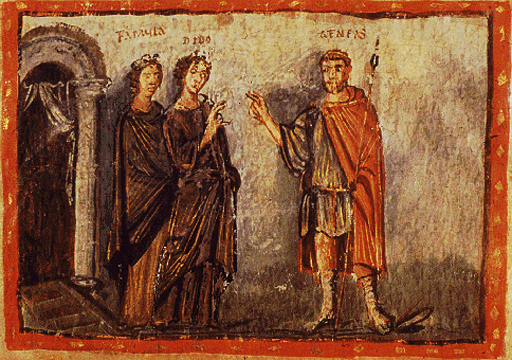
LATN 284: The Age of Augustus
LATN 341: Vergil, Aeneid
Spring Semester 2018


|
LATN 284: The Age of Augustus
|

|
| Verb-form | Person or Substantive-attributes1 | Number (if any) | Tense | Voice | Mood or Part of Speech2 | Sense in Context | Construction3 |
| cano | 1 | sing. | pres. | act. | indic. | sing | main verb of the whole sentence - statement of fact |
| venit | 3 | sing. | pf. | act. | indic. | come | verb of relative clause of fact |
| iactatus | masc. nom. | sing. | pf. | pass. | part. | toss about | agrees with ille, participial phrase in apposition extending the subject of the relative clause |
1Finite verbs have person, among other attributes, non-finite verbs don't: so if the form is a finite one, give the person, but if it's a non-finite form like a participle or an infinitive, use this box to state what gender and case it has (gender and case are attributes of a substantive; number, which is an attribute of both substantives and verbs, here gets a box of its own).
2Finite verbs have mood, among other attributes, non-finite verbs don't: so if the form is a finite one, give the mood, but if it's a non-finite form like a participle or an infinitive, use this box to state what part of speech it is.
3"Construction" asks you to indicate briefly why the verb takes the form that it takes, in order to tell you what the sentence is using it to tell you: what type of clause, participial phrase, etc., is the verb-form helping to create in this sentence?
| Loyola Homepage | Classical Studies Department | Find Loyolans | Loyola Site Index |

Revised 9 January 2018 by
jlong1@luc.edu
http://www.luc.edu/classicalstudies/